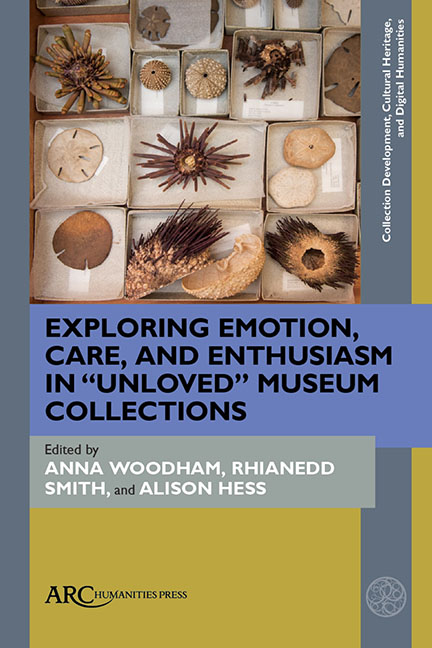Introduction
Published online by Cambridge University Press: 20 November 2020
Summary
Setting the Scene
IT IS A misty November day in Manchester, UK. The fog lingers in the lower yard of the Museum of Science and Industry, the site of a former railway station, as a group of museum staff, expert researchers, and a film crew in scarves and warm jackets walk into the museum's Collections Centre. We are here as part of a research project to talk about how “expert enthusiasts” engage with museum objects. Sometime later, while most of the group is milling around in the open storage, exploring, eagerly taking photographs, and chatting to each other about the objects in front of them, the film crew asks one of the curators to talk on camera about what she thinks is significant about this group's visit. Immediately she replies: “Getting the right people in front of the objects you want answers about … is kind of invaluable. There's something very special about having the insight of an expert, onsite, with the objects … and that triangulation that happens.”1 Her comment strikes us as getting to the heart of what this volume concerns, and it gives recognition to the critical, but under-explored, dynamic between collections of “unloved” objects and the groups, individuals, and institutions who actively care for them. This volume asks: (1) What are “unloved” collections and who cares for them? (2) How can considering theoretical concepts of care and emotion help us to understand and interrogate experiences of “unloved” collections? (3) How do different kinds of carers, especially, but not limited to, “enthusiasts,” express and share their love for collections in daily practice? (4) And finally, are there ways in which different types of carers can work together collaboratively and creatively to engage others with collections?
The vast majority of museum objects, both in the UK and internationally, sit in storage facilities, which are both costly and chronically underused. They often contain items which are not deemed worthy of display but which are seen as having research potential. On the face of it, keeping an object in storage rather than on public display implies a value judgement that these objects are, for some reason, not of interest to a nonspecialist audience.
- Type
- Chapter
- Information
- Publisher: Amsterdam University PressPrint publication year: 2020



